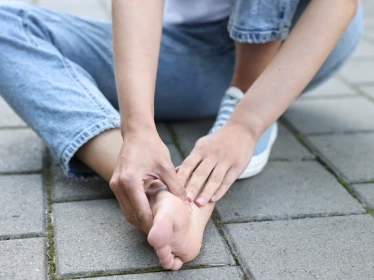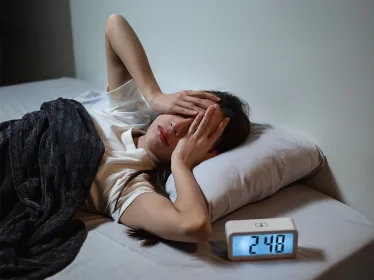What is Congenital Heart Disease?
Congenital Heart Disease (CHD) is caused by a faulty development of the heart before birth that affects the structure of a baby’s heart and the way it works. It is the most common congenital abnormality seen at birth (0.8 to 1% of live births).
Defects can involve the heart walls and valves; and arteries and veins connected to the heart resulting in disruption to the normal flow of blood through the heart and to the rest of the body.
What are some types of heart defects?
“Hole-in-the-heart” - a communication in the wall (septum) that separates the right and left sides of the heart
- An atrial septal defect (ASD) is between the upper heart chambers
- A ventricular septal defect (VSD) is between the lower chambers.
Valve defects (of any of the 4 heart valves – mitral, tricuspid, aortic and pulmonary)
- A narrowed valve opening (stenosis) resulting in blockage to the blood flow
- A leaking heart valve (insufficiency or regurgitation) that does not close properly.
Problems can range from the more common simple conditions (small hole in the heart or minor valve defects) to the rarer complex lesions (abnormal connections of heart chambers and/or blood vessels, missing or poorly formed parts of the heart) that cause severe life-threatening symptoms. Practically any component of the normal heart can be abnormally formed and multiple anomalies can co-exist together.
Why do these defects occur?
The cause of CHD amongst most babies is unknown. Some babies have heart defects because of changes in their individual genes or chromosomes (e.g. Trisomy 21 or Down’s syndrome).
Others are thought to be caused by a combination of single gene defects and other factors, such as environmental, the mother’s diet antenatally (excessive alcohol intake), maternal pre-existing health conditions such as diabetes, obesity and autoimmune disorders, viral infections like rubella (in the first trimester), or medication use (anti-seizure medicines, anti-depressives, drug abuse) during pregnancy.
How can I tell if my child might have CHD ?
CHDs may be diagnosed during pregnancy using a special type of ultrasound on the heart of the developing baby called a fetal echocardiogram.
All babies now undergo newborn screening for critical CHD which involves a simple bedside pulse oximetry using sensors placed on the baby’s skin to estimate the amount of oxygen in a baby’s blood. Most babies born with healthy hearts or simple CHD have enough oxygen in their blood. However 25% of babies with CHD will have a critical type of defect. When screening suggests a problem, additional testing to evaluate for CHD or other potential causes of low oxygen levels will be necessary.
The tests conducted usually include:
- ECG – to measure the electrical activity of the heart
- Chest X-ray – to assess the size of the heart and the blood supply to the lungs
- Cross-sectional echocardiogram or heart ultrasound
- Cardiac catheterisation and angiography - a procedure in which a flexible tube (catheter) is passed through a blood vessel in the groin or arm to reach the heart for measurement of oxygen levels and pressures inside the heart and blood vessels. Angiography using a dye injection and X-rays helps the doctor to see the flow of blood through the heart and blood vessels.
Many of the babies and children have few or no symptoms or signs at all and appear outwardly normal. The presence of an abnormal heart sound or heart murmur detected during examination at birth, in childhood and even adulthood maybe the first clue to an underlying heart issue.
In others, depending on the type and severity of the particular defect, babies may have:
- Cyanosis (lack of oxygenated blood causes bluish tint to the skin, nails and lips)
- Fast or laboured breathing
- Tiredness when feeding
- Sleepiness
- Poor weight gain (failure to thrive)
- Frequent chest infections
- Shortness of breath with moderate activities, palpitations, chest pains or fainting spells in older children
Will my child be able to live a normal life if they have CHD ?
Most children with CHD can lead normal childhood lives and attend normal schools. Do not treat them as “cardiac invalids” or make them believe that they are “delicate” or different from others. Children are usually sensible and can be allowed to limit their own activities.
The general rule is that these babies and children should be, as far as possible, treated as normal kids are treated. Your child’s cardiologist will advise you on the restriction of certain activities, if there is a need to do so.
Are there treatment options available ?
Most babies have mild heart defects that can heal on their own with time. Many children don’t need treatment and can live into adulthood leading independent lives with little or no difficulty.
Treatment for CHD depends on the type and severity of the defect present. Various medications can help the heart work more efficiently, prevent blood clots from forming or control an irregular heart rhythm. One or more staged surgeries to repair the heart and blood vessels may be necessary in some. Another management option (for suitable patients and lesions) is interventional cardiac catheterisation, which can repair certain CHDs without surgically opening the chest.
Other than Congenital Heart Disease, are there other kinds of heart disease that children can develop as they get older ?
Acquired heart disease appears after birth and is the result of damage to the heart caused by a disease, virus or bacteria, or in some cases the cause may not be found. Types of problems include myocarditis (inflammation of the heart muscle), cardiomyopathy, heart failure, hypertension and abnormal heart rhythm (arrhythmias). Children with CHD have an increased risk of endocarditis and damage to the valves and structure of the heart caused by infection or inflammation.
An important type of heart disease to be aware of is Kawasaki Disease which primarily occurs in infants and children under the age of 5 years, and can result in inflammation of blood vessels with potential of damage to the coronary arteries and widening of the vessel called an aneurysm.
The Future for CHD
The field of paediatric cardiology has evolved in recent years with many advances and innovations in imaging, interventional , surgical and support techniques. Together, these can be implemented for early detection and accurate diagnosis of even very complex forms of heart disease. Management by a comprehensive multi-disciplinary team can improve patient outcome, ensure satisfactory development and a good quality of life for the child growing up with CHD.





